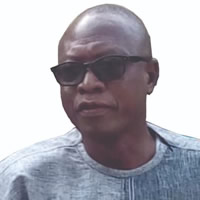Bathing Facilities
Table 12.13 shows the distribution of bathing facilities of households, by district. A bathing facility refers to a place where members of the household take their bath. It distinguishes between the availability of a separate room for bathing in the living quarters, an open cubicle for bathing in the house, a public bathhouse and other types of bathing space.
In the region as a whole, 29.9 percent of households have a shared separate bathroom, while the proportion with an own bathroom for exclusive use is 34.0 percent and the shared open cubicle is 15.3 percent.
Among the districts, Bunkpurugu-Yunyoo has nearly 60.0 percent of households with their own exclusive bathroom, followed by Saboba District at 52.0 percent. With regard to shared separate bathroom in the same house, Tolon Kumbungu has 43.7 percent, followed by Savelugu Nanton where the proportion is 42.3 percent. Between 2.0 percent to 20.0 percent make use of open spaces around the house for bathing.
Type of toilet facilities by districts
Table 12.14 shows the distribution of toilets facilities by district. The majority of households in the region (72.6%) have no toilet facility and, therefore use the bush or open field. Less than one fifth of households (16.6%) use a public toilet. Among the districts, Sawla-Tuna-Kalba has the largest proportion (91.6%) of households without a toilet facility.
The use of water closet is as low as 2.4 percent in the region as a whole. About 10.1 percent of households in Tamale Metropolis use a water closet, which is the highest proportion in the region. The majority of households in Tamale Metropolis (44.8%), however, make use of a public toilet facility.
There is, therefore, the need for Metropolitan, Municipal and District Assemblies to enforce the appropriate bye-laws so that landlords/ladies provide toilet facilities in their houses for the use of the tenants.
Waste disposal by district
The main method of solid waste disposal in the Northern region is 38.7 percent of households using the public dump site (open space), 26.4 percent dumping indiscriminately, 10.9 percent burning their solid waste and 6.2 percent employing the services of collectors (Table 12.15).
A greater proportion of households in Bunkpurugu-Yunyoo (15.9%) use collectors than in the other districts. The use of public dump (open space) varies from 13.2 percent in Bunkpurugu-Yunyoo to 58.2 percent in Karaga. Dumping indiscriminately also varies between 12.0 percent and 49.0 percent for Tamale Metropolis and Sawla-Tuna-Kalba respectively.
Table 12.16 shows that 56.2 percent of households in the region dispose of their liquid waste by throwing it onto the street/outside and a little over a quarter (25.5%) dispose of theirs by throwing onto the compound of their homes, 6.3 percent throw into gutters, 5.1 percent through drainage into pit (soak away), with only 2.1 percent through the sewerage system.
Tamale Metropolis has 3.3 percent of its households that dispose liquid waste through the sewerage system. In Savelugu Nanton and Kpandai districts, 71.3 percent and 44.6 percent of households respectively dispose of their liquid waste indiscriminately.
Source of water (drinking and cooking) by district
Main source of drinking water
Water is a necessity of life which has no substitute. The data in Table 12.17 show that the commonest sources of drinking water in the region are borehole/tube well (35.1%), river/stream (17.4%), pipe-borne outside dwelling (12.2%), pipe-borne inside dwelling (8.7%), dugout/pond/lake/dam/canal (7.6%), public tap/standpipe (6.9%), protected well (5.6%) and unprotected well (4.2%). Putting all the protected sources together, means that 69.6 percent of the population in the region have access to potable water. This is an increase of 30.2 percent over the 2000 figure.
With respect to the districts, Tamale Metropolis has a greater proportion of households using pipe-borne water (87.9%) than the other districts, while West Gonja has a greater proportion of its inhabitants using borehole/tube well (71.1%).
Main source of water for other domestic use
Table 12.18 shows that in the region, almost a third (32.0%) of households use borehole/pump/tube well water for other domestic purposes while about 20.0 percent use river/stream water for domestic purposes. At district level, West Gonja has about two thirds (65.2%) of households that fetch water from borehole/pump/tube well for domestic use.
Tamale Metropolis has 39.7 percent and 39.1 percent of households that use of pipe-borne water inside or outside dwellings for domestic purposes respectively. More than a third of households (37.5%) in Tolon Kumbungu District depend mainly on dugout/pond/lake/dam and canal water for other domestic uses.
Date Created : 11/28/2017 5:24:40 AM





 facebook
facebook twitter
twitter Youtube
Youtube TOLL FREE 0800 430 430
TOLL FREE 0800 430 430 +233 593 831 280
+233 593 831 280 GPS: GE-231-4383
GPS: GE-231-4383 info@ghanadistricts.com
info@ghanadistricts.com Box GP1044, Accra, Ghana
Box GP1044, Accra, Ghana